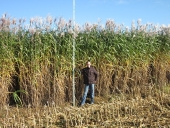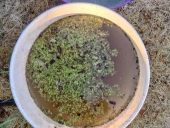





If anyone has any tips on how to shred Miscanthus faster, I'm all ears.




You're not alone there! This lady here seems like an ultra-enthusiast about duckweed, complete with trips all over the world to study it and find unique strains. She's even got a post a bit down the page about feeding duckweed to black solider flies. Seems like a winning biomass combo - you'd have the ridiculous plant productivity of duckweed helping feed the ridiculous animal productivity of BSF and ducks will happily munch both of them like they're candy!Jen Fulkerson wrote:Ok I admit it, I'm a crazy person.

Good to know! I was worried it would be like raspberries, which I've seen shoot up new canes 15-20 feet from an established patch. Those railroad ties are usually pretty chunky aren't they? 6-7in deep? Seems a subsurface barrier would need to be deeper than that to be effective, but I guess if it spreads that slowly it's not exactly threatening to get out of control and take the whole place over or anything!T Melville wrote:Just found this the other day. I don't think it's spread so much as it's grown into a full sized plant, but it was planted beside a railroad tie and now has two stems on the other side of it.

Casie Becker wrote:That article is from 2015... how did I not hear of this before. We don't have enough Styrofoam coming into the house to do a large scale test of this, but it's just screaming to be a kids science fair project.
